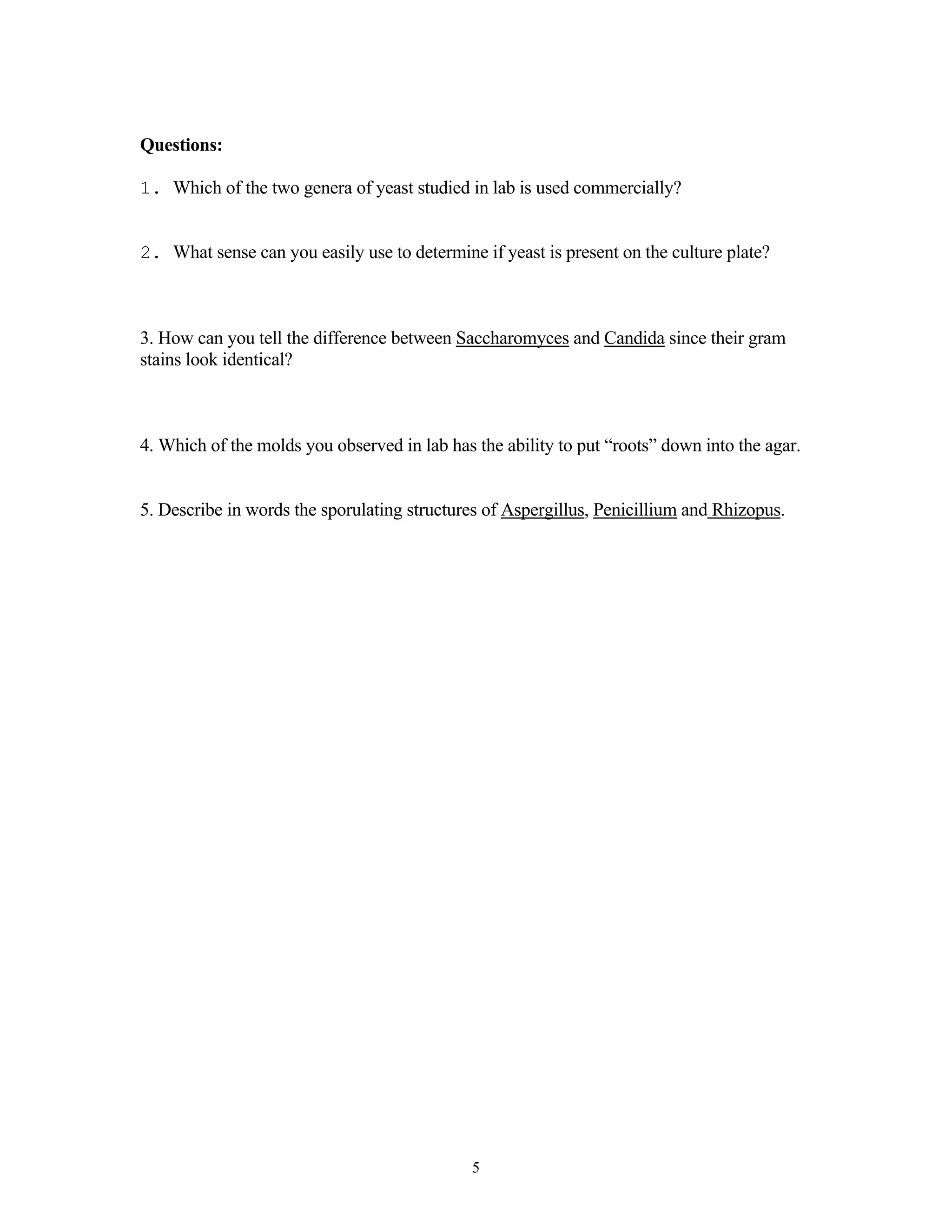This laboratory exercise introduces students to common molds and yeasts used commercially or that can be pathogenic to humans. Students observe and describe cultures of two yeasts - Saccharomyces cerevisiae (used in bread and wine production) and Candida albicans (a normal human flora that can become pathogenic) as well as three molds - Aspergillus (found in soil and hay but can cause lung infections if spores are inhaled), Rhizopus stolonifer (known as "black bread mold"), and Penicillium notatum (used to produce the antibiotic penicillin). Students examine cultures under microscopes and describe differences in colonial morphology, gram stains, and sporulating structures of the various




